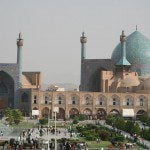Recently a pastor asked me, I have a parishioner interested in the issue of women in ministry leadership and teaching. He wants to know the exegetical arguments in favor of supporting women in ministry. Is there a good lay-level book?
I have often struggled with this question because egalitarian defenses that are convincing tend to be quite advanced (like the outstanding Discovering Biblical Equality). There are less-than-convincing discussions, but I don’t want to support those further. So, I was delighted to have Derek & Diane Tidball’s volume on The Message of Women come across my desk (IVP, 2012). This is now my go-to volume when a lay-person wants to know more about what the Bible says about women in ministry. I have used books by Derek Tidball before and he is a very good researcher, and particularly skilled at making arguments and ideas accessible. No doubt it means something special to have Derek and Diane write and teach together in this project.
 The book does not deal exclusively with issues of leadership and ordination – it attempts to address what Scripture has to say about women comprehensively. There are four sections (Foundations, Women under the old covenant, Women in the kingdom, Women in the new community) divided up further into twenty short chapters. I could spend dozens of posts offering nuggets of wisdom from this book, but I will limit myself to a handful of reflections.
The book does not deal exclusively with issues of leadership and ordination – it attempts to address what Scripture has to say about women comprehensively. There are four sections (Foundations, Women under the old covenant, Women in the kingdom, Women in the new community) divided up further into twenty short chapters. I could spend dozens of posts offering nuggets of wisdom from this book, but I will limit myself to a handful of reflections.
Fatherhood and Family:
…the Biblical emphasis on the upbringing of children is that it is the joint responsibility of the parents, not primarily the responsibility of the mother. Fathers, if anything, were considered to be more responsible. The Bible does not put forward a particular pattern or structure of child-rearing, even if there are principles to be observed. (p. 77)
Leadership of Miriam:
Micah later acknowledged the significance of her leadership when, without making any distinction between them, he wrote, ‘I sent Moses to lead you, also Aaron and Miriam’ [Mic 6:4] (117)
The legacy of Huldah:
Later Jewish tradition regarded Huldah with great respect. Two sets of gates at the south-eastern entrance to the temple mount were named in her memory at the time of the second temple. They became the most frequently used access to the temple. (p. 121)
Mary as teacher:
Luke’s attribution of the Magnificat to Mary and his inclusion of it in his Gospel meant it would be read widely in the church and used as the basis for Christian instruction. In identifying Mary as its author, as Kenneth Bailey has pointed out, ‘he indirectly presents her as a teacher of theology, ethics, and social justice for all his readers.’ (p. 154; Bailey –> see “Women in the NT: A Middle Eastern Cultural View’, Anvil 11 (1994): 9)
Context and Meaning of Paul’s Instruction in 1 Tim 2:5-11 [and salvation through child-bearing]
Paul seems to be warning women not to stridently reject or abandon their primary role for some sought-after status as teachers in the church but to accept their procreative privileges with good grace. Thy need have no fear that they will be denied salvation if they fulfil the role that only they can play in creation. (p. 255)
I could say much more, but I will leave it at that. This is a book every pastor should own, and could easily be a basis for a Sunday School course on women in Scripture. There is a handy study guide for discussion groups in the back of the book. I hope this resource will enjoy a broad readership and will aid and support and encourage women in their pursuit of God’s calling in ministry.











